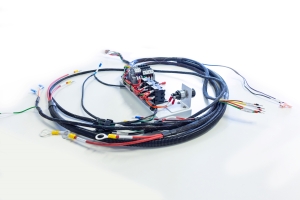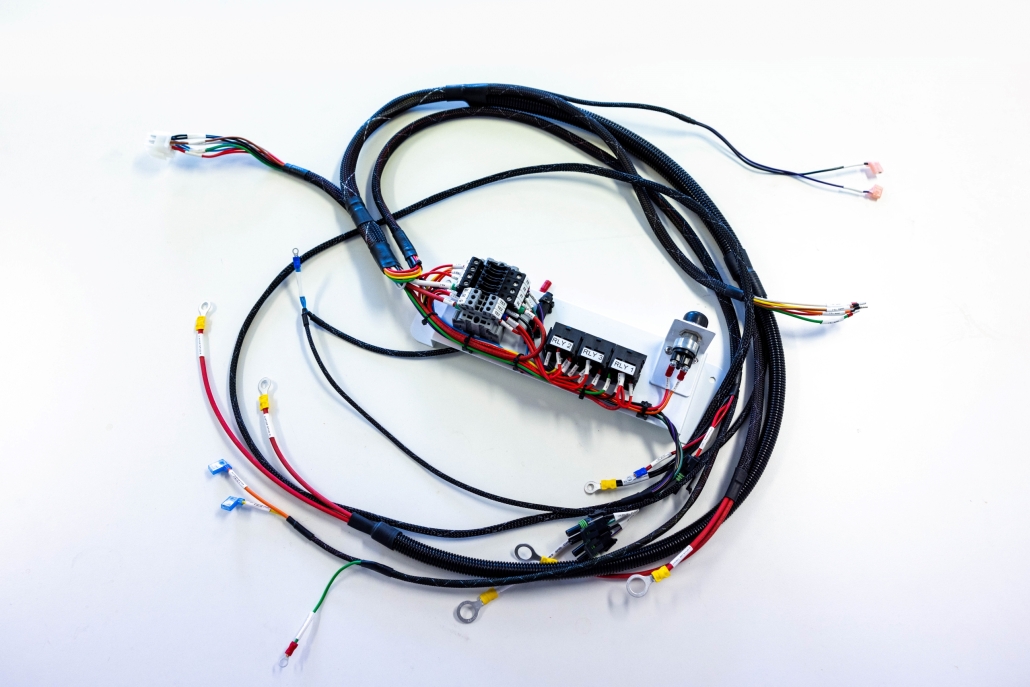Choosing a custom wiring solution for your prototype
The successful roll-out of 5G, electric vehicles, renewable energy capability and other essential technology is reliant on developing and testing cutting-edge technologies that often require highly customised cable and wiring solutions.
Yet, when it comes to creating a prototype, custom wiring can often be overlooked. Choosing the right wiring, components and a quality manufacturer can mean the difference between a successful prototype and one that fails to meet your expectations.
Give your project a solid foundation with these steps to choosing the best custom wiring solution for your prototype:
Step 1: Determine the Purpose of Your Prototype
The first step in choosing custom wiring for your prototype is to establish its purpose. What functions does it need to perform? Where will it be used, and will it be exposed to harsh environmental conditions such as very low or high temperatures, water or atmospheric corrosion, vibrations and even insect and rodent hazards? What current carrying capacity is needed and what kind of voltage stress will the equipment have to withstand during normal and abnormal operations?
Answering these kinds of questions will help you determine the type of wiring you need. For example, if your prototype will be used in a harsh environment your wiring components must be purpose designed to operate safely and efficiently in extreme conditions and critical situations.
Step 2: Think about Installation Considerations
Will your prototype be installed indoors or outdoors and in what conditions? How will the conduit system be designed to minimise bends and distances, meet specific pulling tensions and minimise unnecessary stress points? Will the conductors form a single cable or a three-conductor cable? How accessible will the equipment be for regular inspection and maintenance?
Step 3: Choose the Right Type of Wire
Once you’ve determined the purpose and installation of your prototype, you need to choose the right type of wire. There are many different types of wire available, each with its own set of properties and characteristics.
Some of the most common types of wire used in custom wiring include:
- Copper – one of the most commonly used materials in custom wiring copper is easy to work with and offers good conductivity.
- Aluminium – lightweight and corrosion-resistant aluminium offers good conductivity although it can be more challenging to work with, requiring specialised equipment.
- Tinned copper wire – this is copper wire that has been coated with a thin layer of tin to protect it from corrosion and oxidation.
- Silver-plated wire – offers excellent conductivity and is often used in high-end audio equipment.
Step 4: Choose the Right Gauge of Wire
After you’ve selected the right type of wire, you’ll need to choose its correct size. The wire size can be either measured in square millimetres as a cross sectional area (CSA) or its gauge. Gauge refers to its diameter, and the larger the gauge number, the smaller the wire.
Choosing the right size of wire is important because it affects the amount of current that can flow through it. If you opt for a wire with a size that is too small, it may not be able to handle the current required for your prototype. If you choose a wire size that’s too large, it may be more difficult to work with and take up too much space.
Step 5: Choose the Right Insulation
Finally, you’ll need to decide on the insulation for your custom wiring. The insulation is the protective covering that surrounds the wire and protects it from damage. Choosing the right insulation is important because it affects the durability, safety and longevity of your custom wiring. If you choose an insulation that is unsuitable for the environment in which your prototype will be used, it may fail prematurely.
There are many different types of insulation available, each with its own set of properties and characteristics. Some of the most common types of insulation used in custom wiring include:
- PVC – this commonly used insulation is inexpensive, easy to work with, and offers good protection against moisture and abrasion.
- Teflon – this insulation offers excellent resistance to high temperatures and chemicals.
- Silicone – with its good resistance to high temperatures silicon is often used in automotive and aerospace applications.
- Polyethylene – this material is cost effective and offers good protection against moisture and abrasion.


Selecting the best materials for custom wiring for a prototype requires careful consideration of a range of factors and options. Whether you need to discuss wiring sizes, stranding, coating, voltage stress or harness design Complete Wiring is here to help.
Our team has decades of experience working with customers to develop advanced cable and wiring solutions, prototype wiring assemblies, wiring harnesses and more, so we’re skilled and ready to assist with anything new coming our way. As small batch specialists, we offer the highest level of personalised service and quality with 100% Unit Checks on every custom cable we produce.
Find out more about our controlled quality system or give us a call to discuss your prototype project. We’re ready to help you work out the correct wiring to suit your needs.



